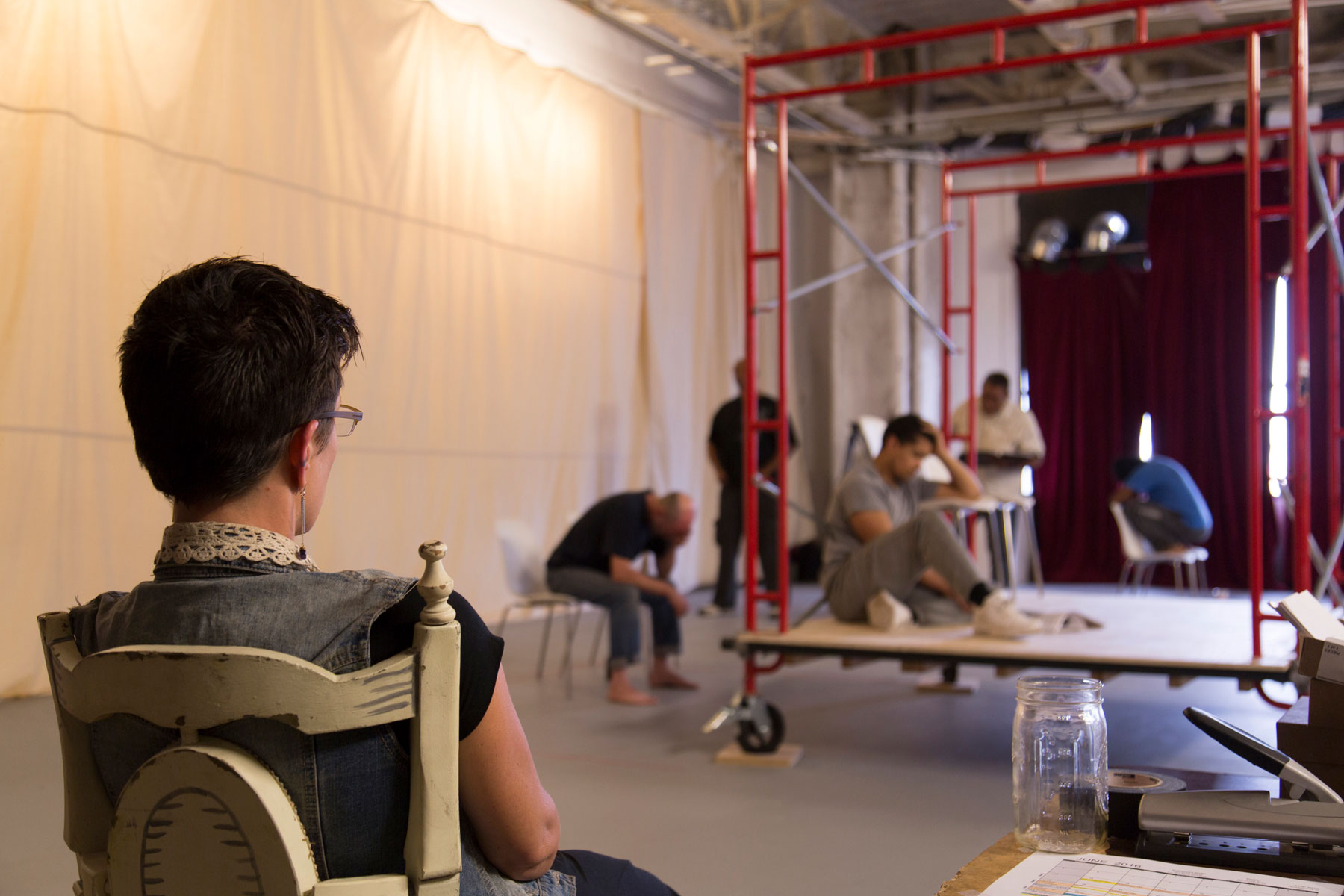Playwright Tony Kushner wrote Angels in America at a time when gay men were marginalized by the culture and dying in droves of AIDS. Architect Maya Lin designed a black granite wall etched with the names of more than 58,000 Americans who died in the Vietnam War. Such examples illustrate how art can distill, even transcend, a crisis, in whatever form it takes. Two Berkeley alumni have created new works — one driven by a personal crisis and the other by an environmental one — that strive to turn something negative into something positive.
Finding hope in the darkness

Sarah Shourd '03 in rehearsal for The Box.
While hiking in Iran in 2009, journalist Sarah Shourd ’03 was captured by the Iranian government and imprisoned in solitary confinement for 410 days. Since her release, she has traveled around the country sharing her experiences and interviewing dozens of people held in isolation, as well as family members, prison officials, and others affected by life “inside the box.” Shourd wove these stories into a play, The Box, that debuted in San Francisco this past June.
Describing the piece as “transformational theater,” Shourd wanted to explore what you would do if you had nothing left to lose. The Box tracks its nine characters as they journey from racist to revolutionary, from tough guy to suicide victim, from teacher to lost soul, and from father to friend.
While The Box criticizes the alleged overuse and horrific conditions of solitary confinement in the United States, it has also helped Shourd understand her own trauma, which, she says, threatened her sanity, dignity, and future.
“This project has propelled me into the next stage of my life,” Shourd says. “It’s a small attempt to give back what’s been given to me.”
Urgency and innovation
In the Academy Award-winning documentary Inside Job, Charles Ferguson ’78 examined the elements that led to the global financial collapse of 2008. Now he has turned his lens to climate change.
Time to Choose, which opened in June, does more than attempt to educate audiences about the immense scope and challenges of climate change. It shares the stories of leaders, innovators, and everyday people fighting for a cleaner, more sustainable world.
With breathtaking footage from five continents, the film travels from Appalachian coal country to Nigerian oil fields to Indonesian rainforests — showing the toll that our reliance on fossil fuels and industrialized agriculture is taking on humans.
The film also points to better ways. Dr. Jane Goodall connects climate to the places and animals we love. Nobel Prize winner Muhammad Yunus is leading efforts to bring solar power to millions of Bangladeshi homes. The film even features a few familiar Berkeley faces, including Michael Pollan, a journalism professor and best-selling author of several books on the intersection of food, culture, and the environment.
“My most surprising discovery in making this film is also the most crucial fact about the issue,” says Ferguson. “The solutions to climate change are already here, waiting for us.”



